One of my favourite sources of inspiration is Math Art, a Dutch graphic artist creating mathematically-inspired woodcuts, lithographs, and mezzotints. Although listed as a modern artist, I like to think a lot of his work dabbles in surrealism. He’s well known for his lithographs and woodcuts that use mathematical objects like the Mobius strip and the Penrose triangle (or as my partner likes to call it, the Palace logo) — all of which everyone I think must have seen in their art history books, maybe:
 Belvedere (1958)
Belvedere (1958)
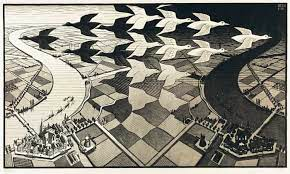 Day and Night (1938)
Day and Night (1938)
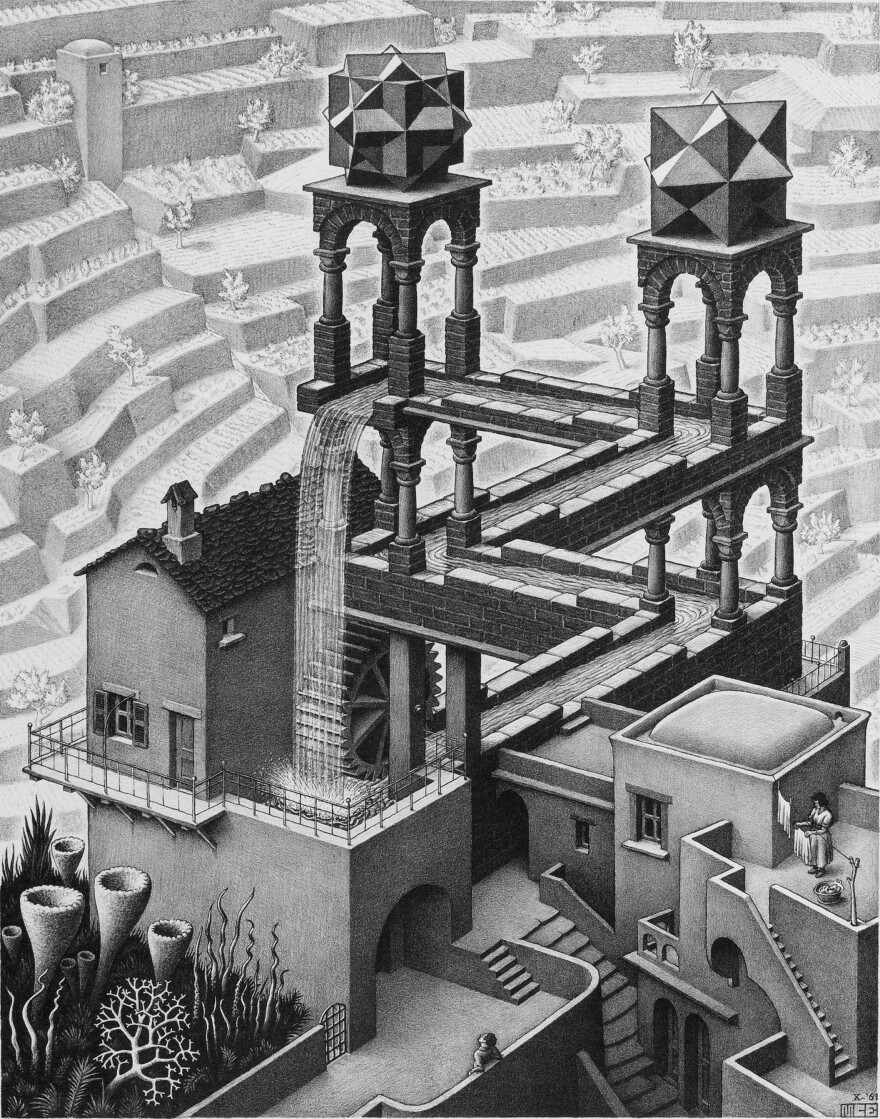 Waterfall (1961)
Waterfall (1961)
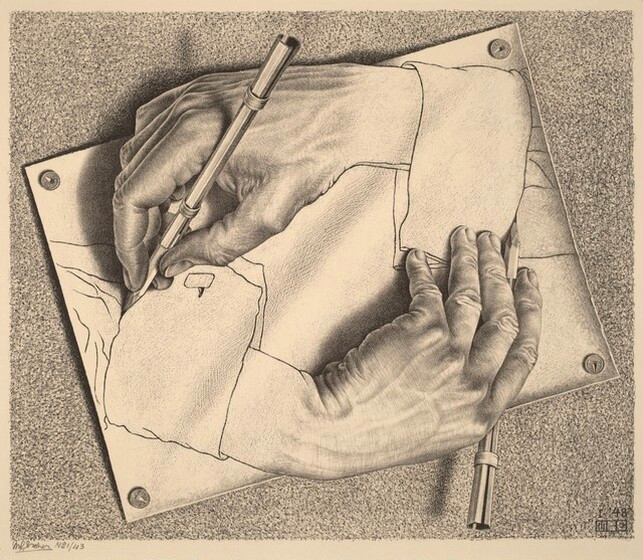 Drawing Hands (1948)
Drawing Hands (1948)
 Relativity (1953), my favourite
Relativity (1953), my favourite
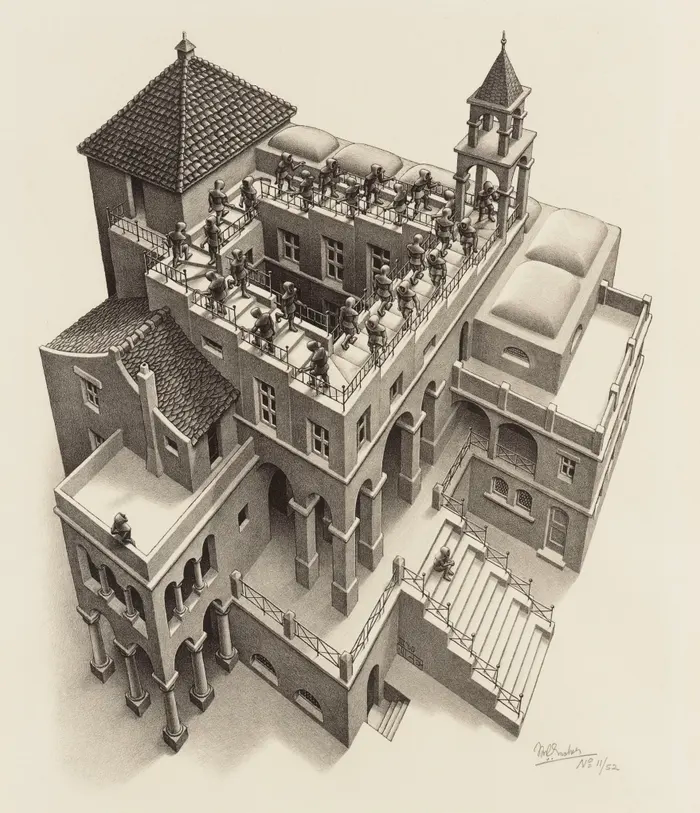 Ascending and Descending (1960)
Ascending and Descending (1960)
Escher explores a lot of impossible objects, infinity, reflection, symmetry, perspective, truncated and stellated polyhedra, hyperbolic geometry, and tesselations. Not that he had any mathematical training — all of it was mostly visual and intuitive. Even so, he created elaborate tessellations in geometric grids that created interlocking designs, which eventually led to hyperbolic geometry tiling; that in itself looked like it could go on forever if you let it.
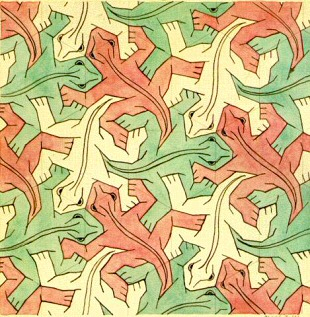 Study of Regular Division of the Plane with Reptiles (1939)
Study of Regular Division of the Plane with Reptiles (1939)
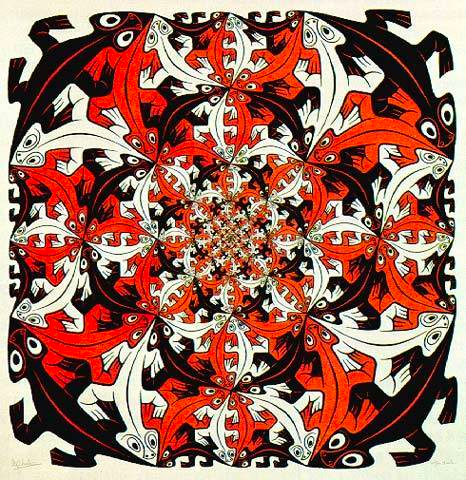 Smaller and Smaller (1956)
Smaller and Smaller (1956)
He drew a lot of inspiration from nature, making studies of insects, landscapes and plants, all of which were details in his work.
Back in high school, I sought to create the Waterfall with clay, inspired by a Toronto-esque scene. Never happened, couldn’t get the physics of it (clay) down. Still, this fascinates and inspires me to build worlds somehow. Still working on it.
This time around, I’m curious about working with my hands and making simple tessellations.
Keywords for inspiration: #RelativityInfinityMöbius-StripTessellation
Tessellation method accessible to all: Free online - Nicolas